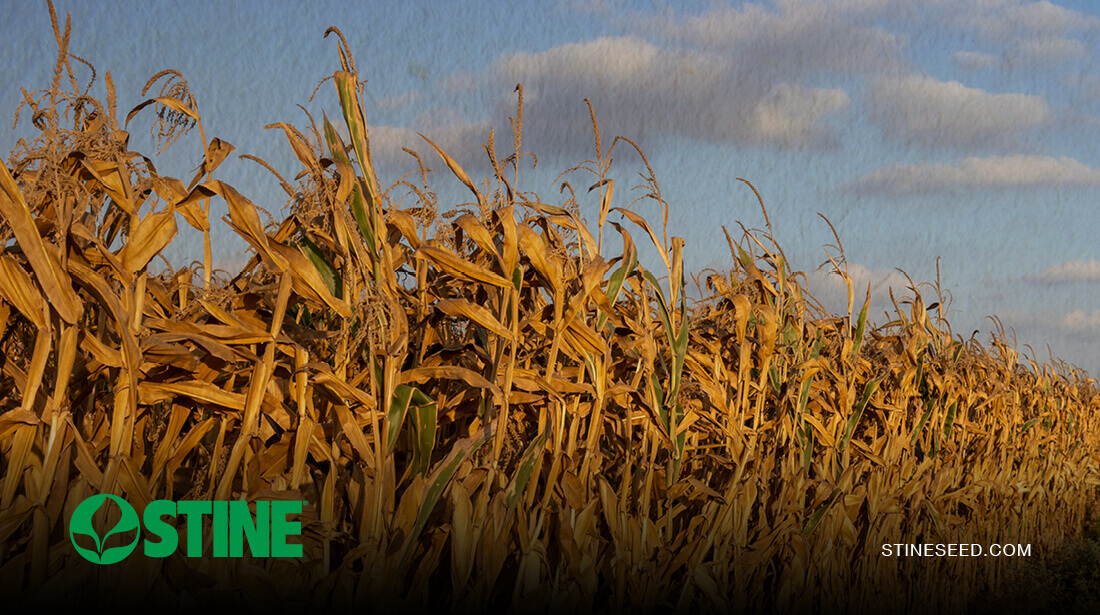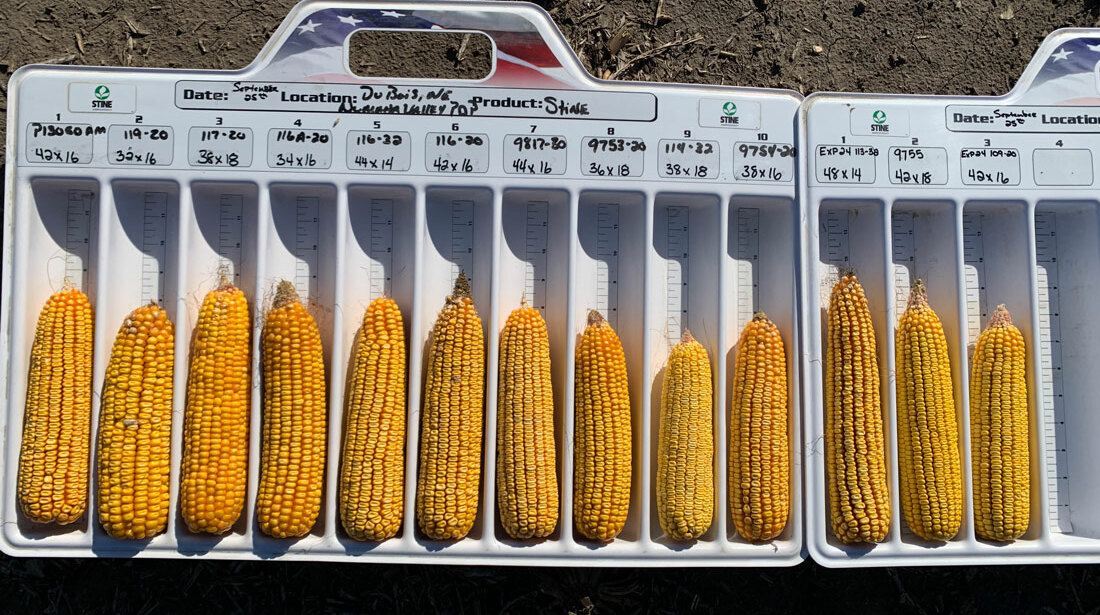Stine® agronomists are keeping busy, working closely with sales reps to harvest Product Development Plots (PDP) and recording findings from the growing season to improve product placement in 2025. According to the U.S. Department of Agriculture’s National Agricultural Statistics Service’s Oct. 7 report, 47% of soybeans and 30% of corn have been harvested.

As harvest rolls on, here’s what some of our agronomists are reporting for PDP results and yields from our grower customers.
Jacob Foote, field agronomist
Harvest is just getting started in my area. We recently harvested a soybean PDP plot in Frankenmuth, Michigan, and are currently harvesting another in Roann, Indiana. Our field in Michigan averaged 78.6 bu/acre across the plot, and we had several key standout products. Some of the top yielders were Stine 17EE32 at 82.6 bu/acre, 20EG02 at 81.4 bu/acre, 22EG02 at 80.1 bu/acre and 13EG23 at 81.1 bu/acre. These products looked great all year. They emerged quickly, handled the adverse growing conditions this year and, of course, yielded well. We are also very excited about our EH lineup. We saw a lot of great things in these lines, especially Stine 12EH02, 13EH62 and 20EH92. This area typically gets affected heavily by white mold, and while there was some in our plot, the products held up great against it. You had to search hard to find any disease pressure this year, which we are all very excited about. We are anxious to see how our corn does in this area and to get the rest of our plots harvested so we can compare results and figure out which products work the best where.
Daniel Greblunas, field agronomist
As of right now I have a corn and soybean PDP harvested. Du Bois, Nebraska, is a dryland plot where we planted our late-season corn. The winner was EXP24 117-20 at 255.5 bu/acre. The picture below is of the ear board from the plot. We also harvested a PDP plot in Mead, Nebraska. The winners in that plot were Stine 26EH02, 29EF02 and 30EH32 — all of which broke over 86 bu/acre. This week, we are busy harvesting soybean plots in Hays, Kansas; Belden, Nebraska; and St. Paul, Nebraska. Next week, we’ll focus on plots in Ong and Mead, Nebraska.

Bill Kessinger, technical agronomist
Quick recap of a large geography. Hurricane Helene hit the eastern Corn Belt and East Coast hard. What little harvest that had started was stopped until the end of last week. Helene caused several issues — standability in the corn, beans sprouting in pods in the heavy areas, and flooding in Tennessee and Kentucky.
Growers got going Thursday and Friday last week and have been running hard ever since. These areas have been experiencing little winds that are leaving a haze of dust everywhere you look. Soybeans are dry, with 9.5%–10.5% moisture, and corn is also dry, in most cases under 20%. Corn yields across the Southeast have been exceptionally good, with some new hybrids doing outstanding. As you move north, some corn has been harvested with good yield reports but minimal acres. Most are focused on cutting beans while the weather is good. I think corn yields will be hit or miss with the wet spring we had.
Soybean harvest is in full swing. Yields are well above expectations with the wet spring and dry August. We have had plots and a few full fields average over 100 bu/acre.
Looking at the extended two-week forecast, not much rain is in sight. For most of the East, this going to be a fast harvest.
Ian Matzenbacher, field agronomist
Harvest around me slowed over the past week and a half due to Hurricane Helene dumping 2 to 5 inches of rain in my area. Harvest picked back up toward the end of last week and is in full swing. Some people have chosen to stop harvesting and start planting winter wheat while waiting for their other crops to dry down some more. It’s going to be a busy few weeks with equipment moving around and a lot to be harvested yet.
Mark Johnson, technical agronomist
Arkansas and Louisiana have completed harvest for the most part. There are still some soybeans to be harvested because of a delay caused by Hurricane Helene, which came through the area. Stine 9817-30 had a good year along with 9753, but we didn’t have a large number of units down here. We’re looking forward to next year in these areas as our product line gets more diverse.
Missouri is in full harvest mode. The southern part is getting close to winding down on corn, and soybeans are going. The northern areas are also moving on corn and soybeans. To the south, we are seeing some good numbers coming from Stine 9818-32, 9817-30 and 9753-20. We have very little information on soybeans yet, but we did have a call on 37EG23 cutting 76 bushels across the scales on 40 acres in Region 8.
As PDPs come out in my region, the new hybrids continue to impress throughout all plots, including Stine 9753, 9754 and 9755 in Arkansas, Louisiana and Missouri, along with some of our new experimental numbers we are reviewing. As we continue to build and update our corn lineup in our late-season portfolio, we are in a good place going forward.
To learn more about Stine’s agronomy team and the services they can provide in your region, connect with your local Stine sales rep. You can also view our 2025 Stine Seed Catalog online to find our 2025 product lineup.
Related Articles
-

Use Stine’s XP® seed treatments to prevent early injury to your crops
December 2025 in Agronomy
-

Understanding Stine’s enhanced oil profile soybeans
December 2025 in Agronomy
-

Soil sampling sets the stage for spring
November 2025 in Agronomy
-

Corn production growth paves way for more high-performing Stine® hybrids
November 2025 in Agronomy



